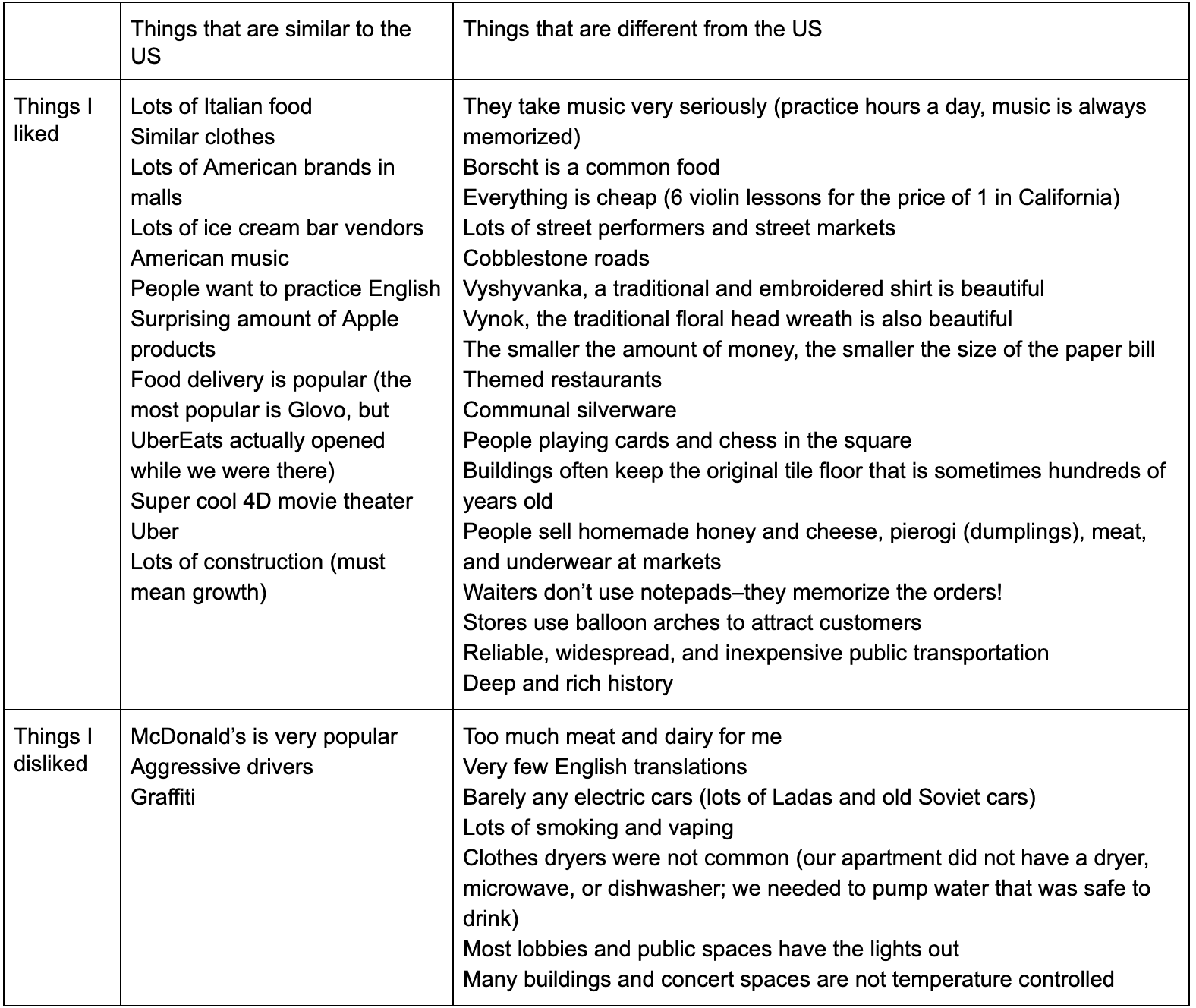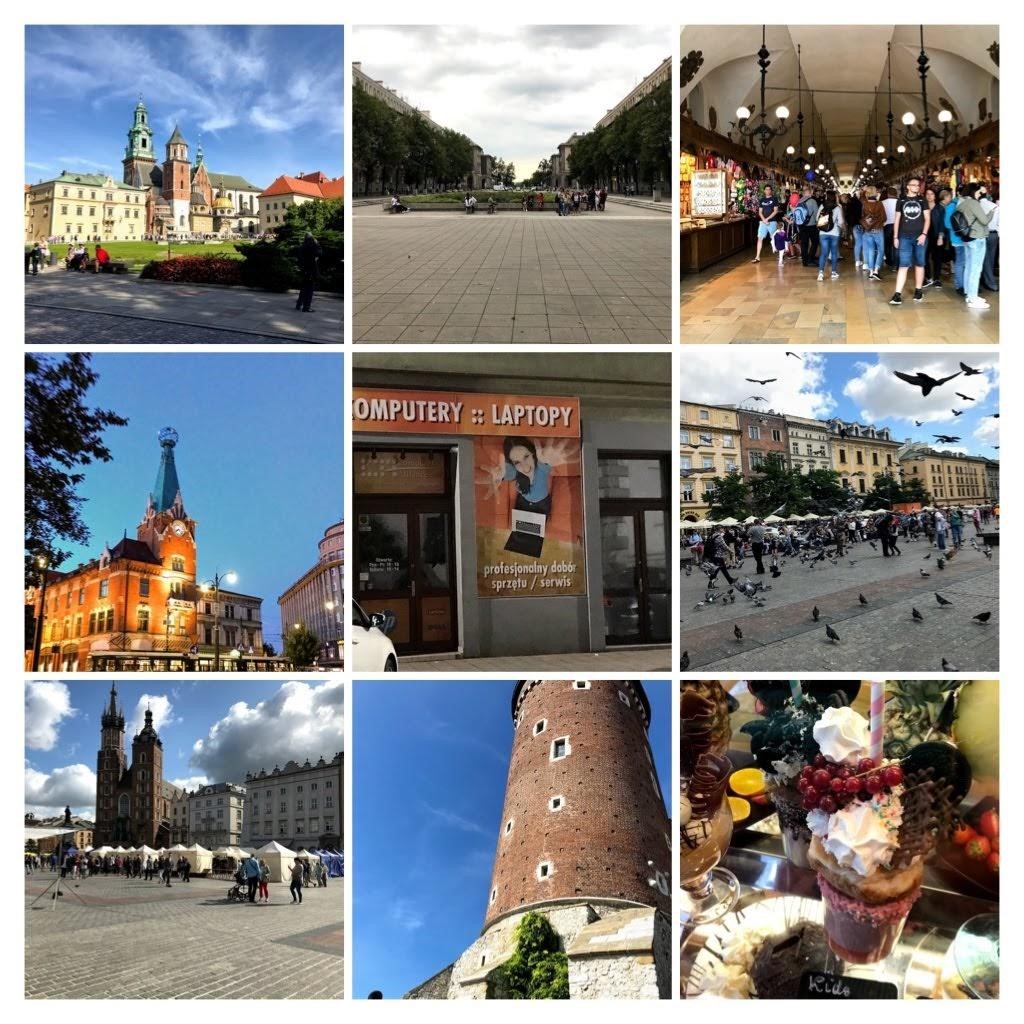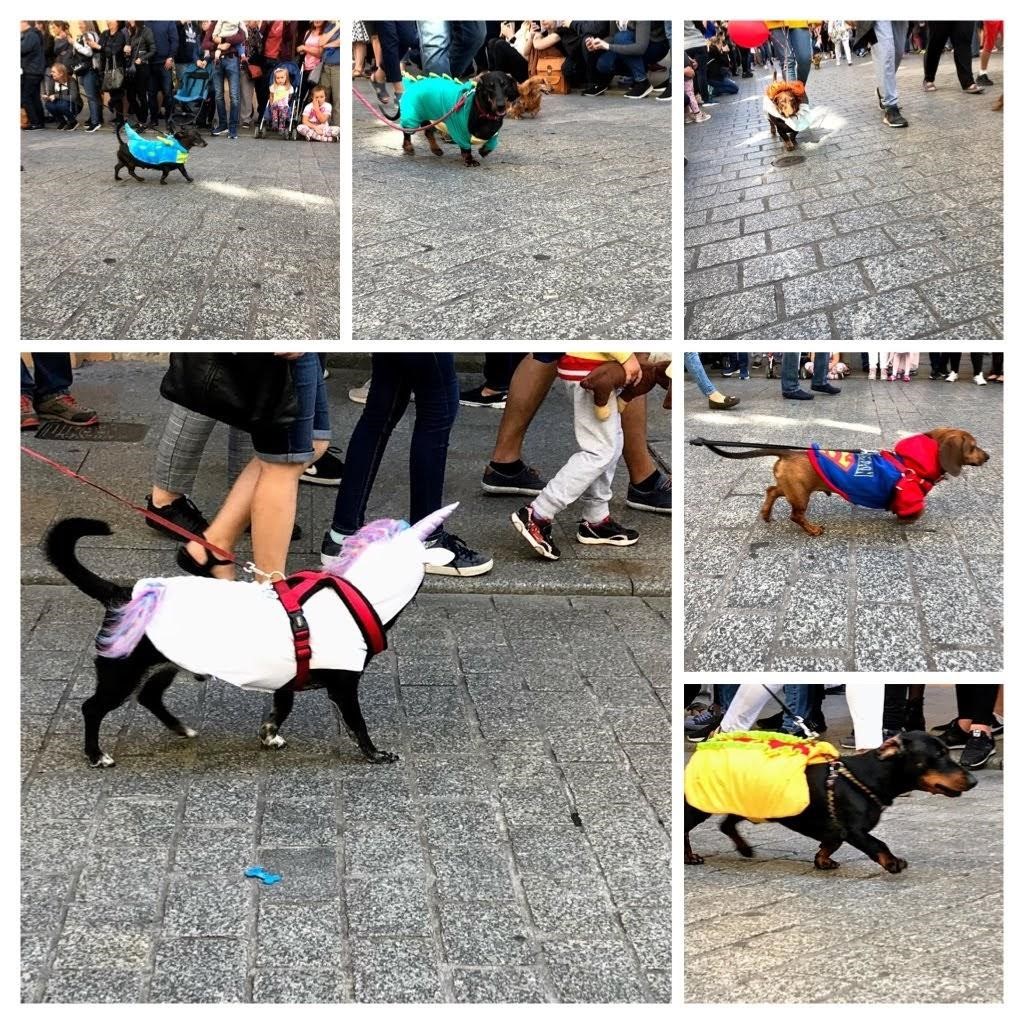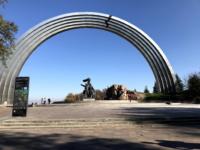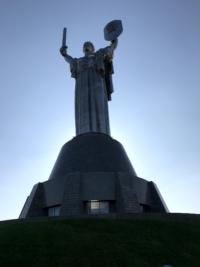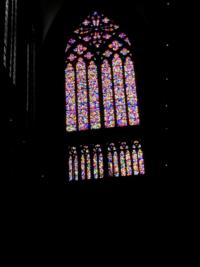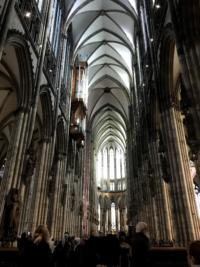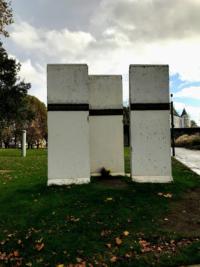Looping with Jamie – Fall 2019
After two years of sharing her experiences with the Medtronic 670G under the title “Diary of an Artificial Pancreas”, 15-year old Jamie Kurtzig has renamed her blog “Looping with Jamie”. In each entry, she will continue to write about her day-to-day experiences living with type 1 diabetes (T1D), now using the DIY app-based system that connects a continuous glucose monitor and an insulin pump to her phone to bring automated insulin adjustments.
August 22: Today, I am flying to Lviv, Ukraine! I am so excited to start this new, year-long adventure with my family. I am really nervous about staying in touch with my friends and making new ones, but I think this is simply an opportunity too good to pass up. This is what I have to keep reminding myself of while lugging tons of my baggage around airports for 2 days of traveling! I have one suitcase with all of my clothes, another suitcase full of all of my chemistry lab equipment, a bag of all of my medical equipment, a bag of things I need for the plane ride, a bag of gluten-free food, my violin, and my backpack full of textbooks. Too much stuff! We brought 3 months’ worth of Dexcom sensors and Omnipods, a backup transmitter, 3 months’ worth of insulin, and tons of gluten-free food since there is little availability in Ukraine, a wheat-loving country. Their blue and yellow flag even symbolizes the sky and the fields of wheat below. Thank goodness our doctor note worked well and none of our diabetes, chemistry, or celiac supplies were confiscated at any of the airports that we traveled through today—a victory. Since I am now Looping, I don’t need to worry about changing any times on my equipment.
First impressions: Ukraine is a place rich with history, but the Ukrainian people have never had much freedom. They have been constantly controlled by Slavic tribes, the USSR, Poland, Nazi Germany, and Russia. Because of this, their unique national culture is still developing. There is also this negotiation between new and old since Lviv was founded in 1256, but Ukraine only got its independence in 1991—only 13 years before I was born!
Ukraine’s former president was Petro Poroshenko, the leader of a chocolate company named Roshen (after him). He ran for reelection this spring but lost to Zelensky, a comedian and actor who actually played the president in one of his television shows! Zelensky won in almost all of Ukraine except for Lviv (where I am living) and a city called Ternopil (where I visited!). I know that Zelensky and Ukraine’s involvement in Trump’s impeachment has made top headlines in the US for several months, but it is honestly not a big deal here. Ukraine is much more concerned with its war with Russia in the east, and Ukrainians think that this is just posturing and typical politics in the US. Ukraine is in a super tricky situation right now since many Ukrainians or especially Western Ukrainians want to get into the European Union, but they can’t because Russia is warring with them and creating instability. Putin wants to keep control over Ukraine, so I am afraid this war will last for a long time.
Here is a list of some of my first impressions during my stay here:
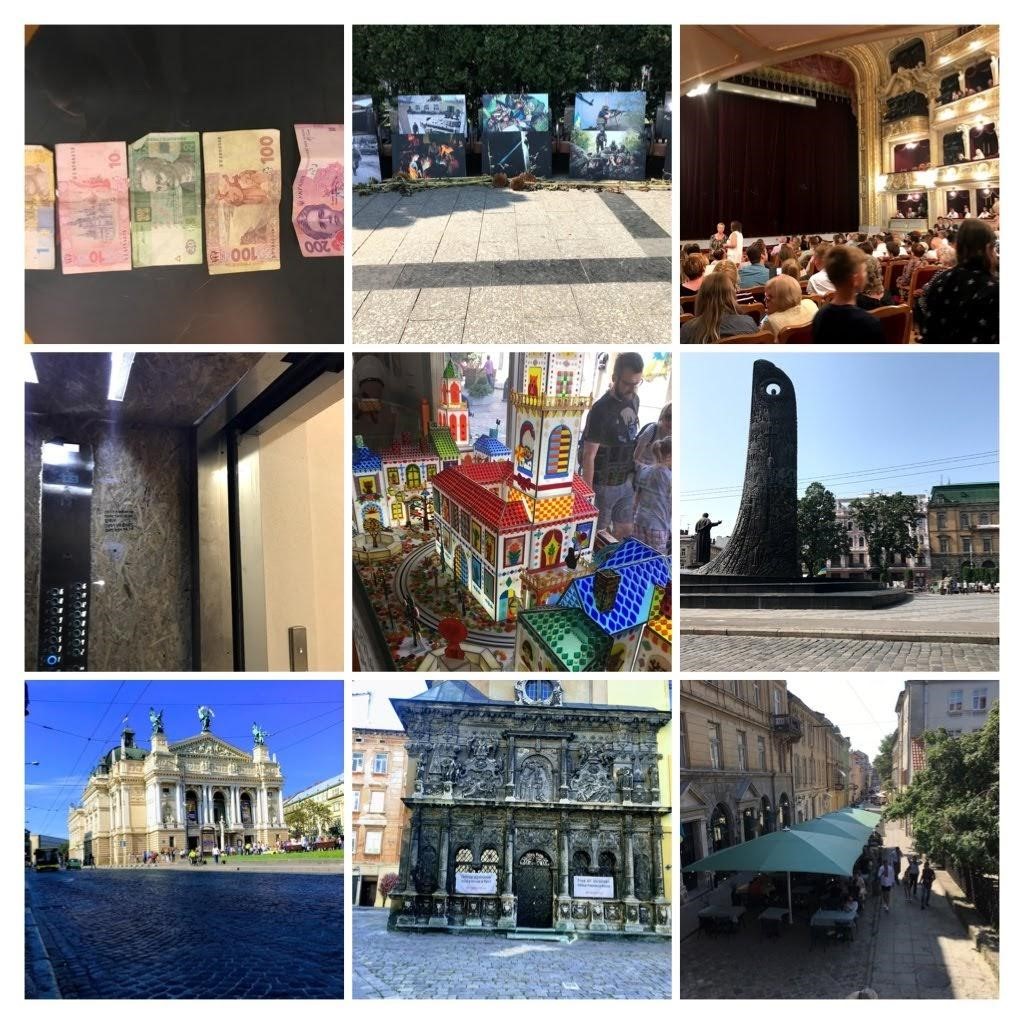 Left to right, top to bottom: Ukrainian money is called a hryvnia, and 25 of them are worth one dollar (notice the physical size difference based on the value of the bill); pictures from Ukraine’s war with Russia; inside Lviv’s beautiful opera house (we saw Swan Lake and The Nutcracker); notice the cardboard wall inside of an elevator while apartment searching; candy making is popular here; the Shevchenko Monument showing Ukraine’s history through its carvings; the outside of Lviv’s opera house; an old church (Ukraine has many) advocating for why Russia should free a Ukrainian journalist; a beautiful Ukrainian street.
Left to right, top to bottom: Ukrainian money is called a hryvnia, and 25 of them are worth one dollar (notice the physical size difference based on the value of the bill); pictures from Ukraine’s war with Russia; inside Lviv’s beautiful opera house (we saw Swan Lake and The Nutcracker); notice the cardboard wall inside of an elevator while apartment searching; candy making is popular here; the Shevchenko Monument showing Ukraine’s history through its carvings; the outside of Lviv’s opera house; an old church (Ukraine has many) advocating for why Russia should free a Ukrainian journalist; a beautiful Ukrainian street.
August 26: I am so excited to take my first violin lesson! I know that my teacher will not speak English (only Ukrainian), so I am nervous to see how this will work out. My lesson turned out to be a disaster. I didn’t bring the sheet music from any past pieces since I thought he would just give me a new piece to learn. He kept asking me to play a piece that I had learned, but I don’t have any memorized. I have always used sheet music. I guess that they do everything by memory here. I could not understand what he was saying, and he couldn’t understand why I wasn’t playing a piece. At the end of the lesson, we both knew that this wasn’t working. He referred me to another violin teacher named Roman who has been my violin teacher since then. He does speak English, and I have really loved learning from him. Thank you, Roman!
While I was walking to a violin lesson one day, I looked at my phone and saw that I had almost 10 units of active insulin! I had been needing a lot more insulin than normal earlier that week, so I had been needing to be aggressive with my bolusing. But this time, I guess I was too aggressive. I sent the screenshot below to my mom, and I started freaking out. I ate about 3 glucose tabs, multiple shot blocks, and a bar. I noticed that I was starting to run out of low supplies from my backpack. I continued walking to my lesson, and when I arrived, I explained my situation. Roman actually gave me condensed milk to eat by the spoonful! I called my mom to come over, and I needed to sit down. I never actually went that low, but my system was so out of whack that I couldn’t do the lesson. After that, I became super scared about going low, and I would under bolus, making my blood sugar numbers go high for the next few days.
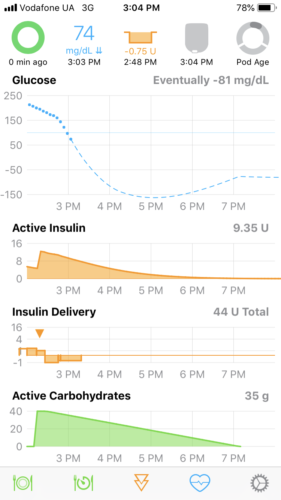
T1D and celiac in Ukraine: In general, my blood sugar numbers were not as good in Ukraine as they are in California. I think this is because I am eating foods that I am not used to eating. In California, I am used to eating lots of fruits and vegetables, and here, I am eating mostly meat, dairy, potatoes, banosh (Ukrainian dish made of cornmeal), sushi (the sushi is surprisingly better than in California even though Ukraine isn’t next to an ocean), and chocolate (Lviv is famous for chocolate). Eating this way has caused my blood sugar numbers to run higher than normal. There is not much gluten-free packaged food here (crackers, bread, tortillas, etc), and not many people actually know what gluten is. In a grocery store, there is this tiny gluten-free section with about 5 things in it. Every time a family member flew over to visit us, we would ask them to bring a whole suitcase of gluten-free food to us since there is no Amazon delivery here!
Poland: My family and I are taking a vacation from our vacation and going to Krakow, Poland! It was a 7-hour wait time at border control, not even including drive time. They made me unpack my diabetes supplies, but they did not take anything.
While in Krakow, my family and I visited Auschwitz. There are not many living survivors from Auschwitz left, and I hope that the horrors that happened in Auschwitz are never forgotten.
Left to right, top to bottom: Wawel Royal Castle; Nowa Huta, an old, planned, communist community from Stalin’s time; Cloth Hall, the world’s oldest shopping center; beautiful European architecture; I wonder what that sign says 😁; Krakow’s main square; markets in town square; Wawel Royal Castle’s tower; a crazy ice cream sundae I saw!
While In Krakow, my family and I went to the annual wiener dog parade. It was definitely a highlight of the trip, and I could not stop laughing the whole time! The parade was about an hour with hundreds of wiener dogs. Here are some of my favorite dogs. Now I want a wiener dog! Can they be taught to sniff blood sugars?
Carpathian Mountains: One of the highlights of my trip to Ukraine was going to the Carpathian Mountains of Ukraine for a long weekend trip. This is where the beauty of village life and nature shines. During this trip, I loved learning about the Hutsal culture, painting pysanky (Ukrainian Easter eggs), making cheese horses, and foraging for mushrooms. After being inspired by the Easter egg museum, I decided to try my own hand at painting pysanky—even though it was fall. I learned that people need to use wax to paint on the eggs, the eggs are dipped in colored paint, and then the wax is peeled off. I was so bad at painting! I have a new appreciation for everyone who paints Easter eggs now. Secondly, I learned that people make horses out of cheese. They get cheese like string cheese, put it in hot water, take it out of the water, and pull and push the cheese into the shape of a horse. My cheese horses looked like wiener dogs! Lastly, we foraged for mushrooms in the mountains. I expected us to find mushrooms every few seconds, like picking wildflowers, but we actually only found about 4 or 5 mushrooms on our whole 5-hour excursion. I was also surprised by how our guide could so easily tell the difference between eating mushrooms and poisonous mushrooms. I have lots of new appreciation for the amazing Hutsel culture!
 Left to right, top to bottom: Orthodox churches are common in Ukraine (I love their shiny, metallic domes); the wall art is made of pysanky (Ukrainian Easter eggs); the world’s only Easter egg museum; one of my favorite Easter eggs; a church in Ivano-Frankivsk; more cool Easter eggs; I was amazed by how detailed these handmade pysanky were; me at Silver Waterfall in the small village of Sheshory in the Carpathian mountains; an Easter egg from the US!
Left to right, top to bottom: Orthodox churches are common in Ukraine (I love their shiny, metallic domes); the wall art is made of pysanky (Ukrainian Easter eggs); the world’s only Easter egg museum; one of my favorite Easter eggs; a church in Ivano-Frankivsk; more cool Easter eggs; I was amazed by how detailed these handmade pysanky were; me at Silver Waterfall in the small village of Sheshory in the Carpathian mountains; an Easter egg from the US!
Ternopil: My family was so lucky to make amazing friends who live in Ternopil. Before we left, I heard that my violin teacher from home’s friend was from Ukraine and had family living there who spoke English. This incredible family welcomed us with open arms, and we had an incredible time learning about their village that weekend. Thankfully, we remembered all of our diabetes-related chargers, but their cat loved playing with the chargers for my Loop system. Thank you!
Left to right, top to bottom: a beautiful waterfall display; I ate snails at a delicious Georgian restaurant (not the US Georgia); a view of beautiful Ternopil; town church; Ternopil’s coat of arms; a wooden statue housed in Zbarazh Castle that highlights the liberation struggle of Ukrainian Cossacks; Ternopil’s lake; I love Ternopil!
Kiev: I also had the opportunity to travel to Ukraine’s capital, Kiev, that was founded in the 5th century. Kiev was conquered by Vikings and Mongols, but now Ukraine’s biggest enemy is Russia. Ukraine absolutely hates Russia. Stalin killed millions of Ukrainians by taking all of the farmed food (collectivization) and never giving it back. If anyone was caught with as much as 5 grains of wheat, they could be shot dead. Even after Ukraine got its independence, they had a revolution against their president who was like a puppet for Russia. This happened only 5 years ago in 2014. This anti-Russian revolution called Maidan was against the corrupt president Yanukovych. Yanukovych was like a Russian pawn who built a $2 billion (yes, with a b) house with the money he was paid by Russia. I was fascinated by how, in Ukraine’s capital, most people spoke Russian as their everyday language. Even though they keep the Russian language in Kiev, Ukraine’s leaders are now debating which Soviet-era monuments they should dismantle.
The wide roads, rich history, strong sense of nationalism, and giant buildings reminded me a lot of Washington DC, where I visited when I went to Children’s Congress this summer. I was also brought back to America when I visited the toilet museum—I could not stop laughing the whole time!
Fun fact about Kiev: Kiev has one of the world’s few working Lavras (monastery consisting of underground caves for hermits). In the past, monks lived underground their whole lives never seeing the sun, only eating bread and drinking water, and never speaking. I had the amazing privilege to go into the caves to hear the monks sing and to witness the pilgrims of the world pay their respects to the religious leaders buried in the network of caves.
The statue in the first picture (the Motherland Monument) is bigger than the Statue of Liberty!
This arch in the second picture is called the People’s Friendship Arch and was a propaganda gift from Russia to Ukraine that the Ukrainian government is now thinking about taking down.
Cologne, Germany: I love how beautiful Cologne is—especially its famous cathedral. I thought it was very interesting how the cathedral has some modern elements, like contemporary art in stained glass windows, mixed with history, like how the claim to have the bones of the Magi. Fun fact: the area of stained glass windows in Cologne Cathedral is greater than the floor area!
The first picture shows a modern stained glass window in Cologne Cathedral; the second picture shows the inside of Cologne Cathedral; the last picture shows pieces of the Berlin Wall.
Today, Germany allows many immigrants into their country, which is a big contrast to the time of the Berlin Wall, a part of which is in the photo above. I don’t know why so many governments want to make walls at their borders because it has never worked out well throughout history. For example, the Great Wall of China failed to keep Mongols and other nomadic warrior tribes out of China. The wall between Israel and Palestine is causing more disagreements between the countries. The possibility of a wall between the United States and Mexico does not seem like a good idea to me based on this. Let’s build bridges, not walls.
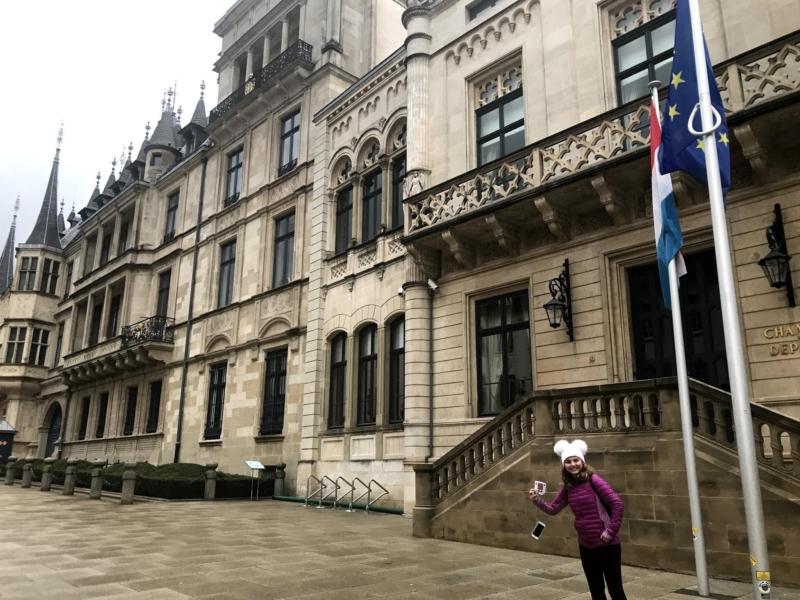
Luxembourg: Our stop in Luxembourg was short but sweet. We noticed we were near Luxembourg, so we decided to country hop—because we could. Luxembourg is the only Grand Duchy still around today, so see the picture of it below. Fun fact: did you know that people who live in Luxembourg are called Luxembourgers (pronounced Luxem-burger)?
November 13: As part of this trip, I also wanted to help people with type 1 diabetes here in Ukraine. I met with an endocrinologist here in Lviv named is Dr. Ihor Hrytsiuk who works at the Western Ukraine Specialized Children’s Medical Center. I absolutely loved meeting with him. Here are some notes from our meeting:
- 12 of his 200 patients use pumps, but more patients want it. They are not very accessible to people because they are not covered by the government. The only pump company here is Medtronic.
- CGMs are also not funded by the government, and so not many people can use them. The FreeStyle Libre is the most popular, but there is also Dexcom.
- There is no Humalog here. There is only Sanofi Lantus and Novolog. Insulin is funded by the government. The government also pays for insulin pens and some test strips.
- There are no closed-loop system users here. I was the first person he had ever met who used a closed-loop system.
- About 1 in 400 people have type 1 diabetes here, but it is on the rise. He used to get about 2 new diagnoses a month, and now it is 2 a week.
- At this hospital, they have 4 training sessions:
- Type 1 diabetes in general
- Nutrition and how to calculate carbs (called “bread units” here)
- How to calculate the right amount of insulin to give
- How to change insulin doses
- An in-range blood sugar is 72-180 mg/dL. Since they use the metric system here, it is the same as 4-10 mmol/L.
- Many people experience hypoglycemia at night here. In the first year of diagnosis, people typically have 6.5-7.0 A1Cs because of their honeymoon period, but this gets worse later on. People usually have A1Cs of 7.5-9.0 after their honeymoon period. The worst years of blood sugar time-in-range are the teenage years. Some teens lie about taking their insulin. This seems to be similar worldwide.
- We got to meet the family of a newly-diagnosed child who was in the hospital. It was so interesting to me how they said (in Ukrainian, but Dr. Hrytsiuk, who speaks English, translated this for us) that they thought their grandson’s diagnosis was because they had done something wrong. They mentioned something about how their stress caused this condition in their grandson. Since most people don’t know that much about this condition, they think that their behavior caused it, not their pancreas.
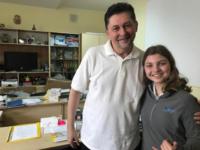
We are brainstorming specific ways to help Dr. Hrytsiuk and his patients. I will keep you posted on what we come up with in case you want to help.
Closing remarks: I know my trip to Ukraine is ending, but I am so thankful for this incredible opportunity. I will never forget this trip. I ended the trip with a laugh and a beautiful view (see the pictures). The f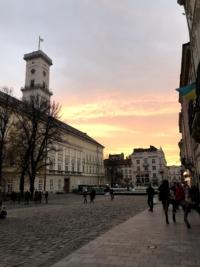
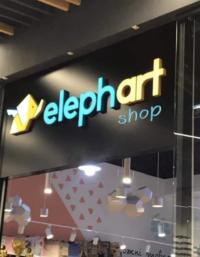 irst picture shows a translation gone awry! While I have been here, I have taken photos of all of the strange translations I have found, but this one is my favorite. The second picture was taken on our last night in Lviv’s city center.
irst picture shows a translation gone awry! While I have been here, I have taken photos of all of the strange translations I have found, but this one is my favorite. The second picture was taken on our last night in Lviv’s city center.
Late November: We are home. Back in the US after 90 days of travel. My type 1 diabetes management has been normal here, and my jet lag has not been so bad. We came home so that we wouldn’t miss one of my favorite holidays—Thanksgiving with my family.
November 28: Happy Thanksgiving! I am thankful to be in Santa Barbara with my family, eating delicious food. I am thankful for fruits and vegetables. I am thankful for the opportunity to travel this year. I am thankful for my amazing education. I am thankful for my incredibly kind family and friends who support me in everything I do. I am thankful for you for reading my story!
I am thankful for the silver linings of diabetes. T1D has helped me to be more familiar with numbers and better at making quick decisions. I am thankful for my lifelong passion and hope for finding the cure. I am thankful for my amazing circle of hope that helps me manage my diabetes. I am thankful for amazing doctors, nurses, researchers, and JDRF staff for making my life and so many other peoples’ lives better. I am thankful for what this condition has taught me, but not that I have to live with it every day.
Lastly, don’t forget to come to my book launch! I am publishing my first collection of poems called Onederland: My Childhood with Type 1 Diabetes, and it is launching at Book Passage in Corte Madera on December 15 from 4 to 6 PM. The event is free, and there will be drinks and hors d’oeuvres for you. I will explain the book’s story and read some of my poems. Please join me at my book launch! Book Passage Event Launch Page I hope I can see you there! Amazon page, Barnes and Noble Page
Here is a summary of the book:
My poetry book, Onederland, is a collection of 100 poems I have written throughout my life (from kindergarten to high school). The poems cover topics ranging from Type 1 diabetes to sunsets to worn-out shoes. By purchasing a copy and looking at the world through my eyes, you will be supporting Type 1 diabetes non-profits and their groundbreaking work toward finding a cure and improving the lives of millions of children and people, like me, who live with Type 1 diabetes. I have been living with Type 1 diabetes since I was one year old, and it is my dream to be a part of finding the cure.
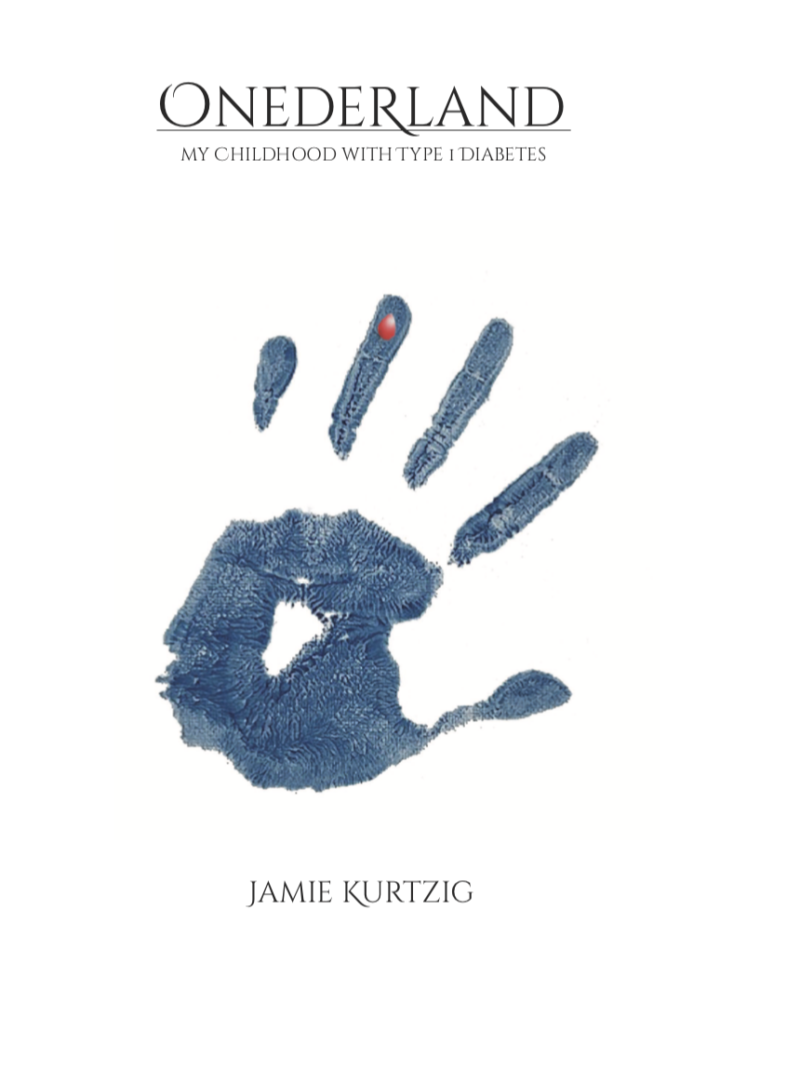
With Gratitude and Aloha,
Jamie
